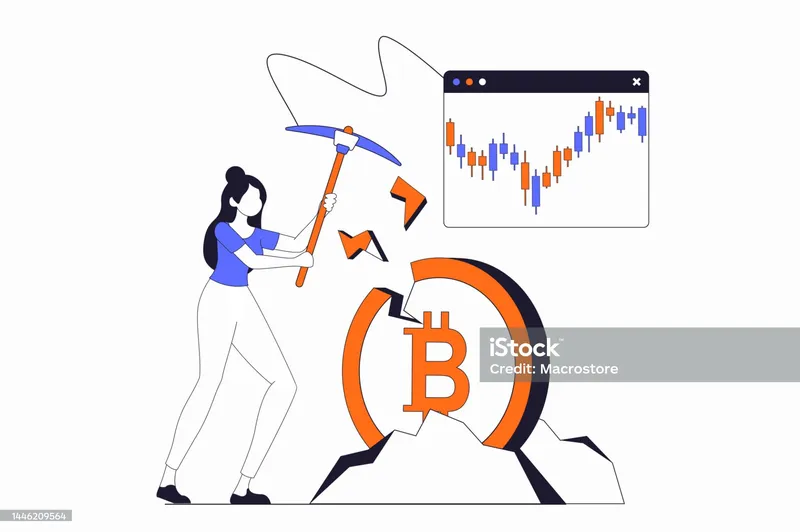Choosing a Reliable Cryptocurrency Exchange for Trading: A Comprehensive Guide

In the fast-paced world of cryptocurrency trading, selecting the right exchange is paramount to your success and security. This comprehensive guide will equip you with the knowledge and tools needed to make an informed decision when choosing a cryptocurrency exchange.
Contents
- I. Introduction
- II. Types of Cryptocurrency Exchanges
- III. Factors to Consider
- IV. User Experience and Interface
- V. Trading Fees and Costs
- VI. Customer Support and Reputation
- VII. Regulatory Compliance
- VIII. Reviews and Recommendations
- IX. Trading Tools and Features
- X. Additional Security Measures
- XI. Account Verification and Withdrawal Limits
- XII. Making Your Choice
- XIII. Conclusion
- XIV. Security Tokens and Tokenization
- XV. Yield Farming and Staking
- XVI. NFTs and Digital Collectibles
- XVII. Tax Implications
- XVIII. Industry Trends and Future Outlook
- XIX. Conclusion and Continuous Learning
I. Introduction
Cryptocurrency exchanges serve as the bridge between traditional fiat currencies and digital assets. Understanding their significance is the first step:
- Defining Cryptocurrency Exchanges: What are cryptocurrency exchanges, and why are they essential?
- The Growing Crypto Market: Exploring the expansion of the cryptocurrency market and the role of exchanges.
II. Types of Cryptocurrency Exchanges
Not all exchanges are created equal. We’ll dissect the various types of cryptocurrency exchanges:
- Centralized Exchanges (CEXs): An in-depth look at centralized exchanges, their characteristics, and benefits.
- Decentralized Exchanges (DEXs): Understanding decentralized exchanges and their advantages.
- Hybrid Exchanges: An exploration of hybrid exchanges, which combine elements of both centralized and decentralized platforms.
III. Factors to Consider
Choosing the right exchange involves assessing several critical factors:
- Security Measures: How to evaluate an exchange’s security features and ensure the safety of your funds.
- Liquidity: The importance of liquidity and how it impacts your trading experience.
- Supported Cryptocurrencies: Examining the range of cryptocurrencies offered on an exchange.
IV. User Experience and Interface
A user-friendly interface can make or break your trading experience. We’ll cover:
- User Interface: Assessing the ease of use and intuitiveness of the exchange’s platform.
- Mobile Accessibility: The significance of mobile apps and accessibility for on-the-go trading.
V. Trading Fees and Costs
Fees can significantly affect your profits. Here, we’ll dive into:
- Trading Fees: An explanation of different fee structures and how to calculate trading costs.
- Deposit and Withdrawal Fees: Understanding fees associated with depositing and withdrawing funds.
VI. Customer Support and Reputation
Responsive customer support can be a lifesaver in times of need. We’ll explore:
- Customer Service: Assessing the quality and availability of customer support.
- Exchange Reputation: How to research an exchange’s reputation and track record.
VII. Regulatory Compliance
Cryptocurrency exchanges operate in a complex regulatory landscape. We’ll cover:
- Regulatory Considerations: The importance of choosing an exchange that complies with local regulations.
- KYC and AML Procedures: Understanding Know Your Customer (KYC) and Anti-Money Laundering (AML) requirements.
VIII. Reviews and Recommendations
Leveraging the experiences of others can be invaluable. We’ll discuss:
- Online Reviews: How to read and interpret online reviews and recommendations.
- Community Feedback: The role of online communities and forums in gauging an exchange’s reputation.
IX. Trading Tools and Features
Some exchanges offer advanced trading tools and features. Here’s what to look for:
- Charting and Analysis Tools: Assessing the availability of charting and technical analysis tools.
- Order Types: Understanding different order types and their significance in trading.
X. Additional Security Measures
In addition to basic security, some exchanges go the extra mile. We’ll delve into:
- Cold Storage: The role of cold storage in protecting user funds.
- Insurance Funds: Exchanges with insurance funds to cover losses.
XI. Account Verification and Withdrawal Limits
Understanding account verification and withdrawal limits is crucial. We’ll clarify:
- Account Verification Levels: Different levels of account verification and their implications.
- Withdrawal Limits: How withdrawal limits vary based on verification status.
XII. Making Your Choice
Now that you have a comprehensive understanding of what to look for, we’ll provide guidance on:
- Decision-Making Process: How to weigh the factors and make an informed decision.
- Top Cryptocurrency Exchanges: A list of reliable exchanges to consider based on your preferences.
XIII. Conclusion
In conclusion, selecting the right cryptocurrency exchange is a critical step in your journey as a crypto trader. By carefully considering the factors outlined in this guide, you can confidently choose an exchange that aligns with your trading goals and priorities. Remember that the cryptocurrency landscape is continually evolving, so staying informed and adapting to changes will be key to your long-term success.
XIV. Security Tokens and Tokenization
- What Are Security Tokens?: Explaining the concept of security tokens and their role in cryptocurrency markets.
- Tokenization of Assets: Discussing the tokenization of real-world assets and its impact on traditional finance.
- Compliance and Regulations: How security tokens are subject to specific regulations and why compliance is crucial.
XV. Yield Farming and Staking
- Yield Farming: Defining yield farming and how it allows users to earn passive income.
- Staking: Explaining the process of staking cryptocurrencies and its potential rewards.
- Associated Risks: Highlighting the risks associated with yield farming and staking.
XVI. NFTs and Digital Collectibles
- Non-Fungible Tokens (NFTs): A detailed look at NFTs, their uniqueness, and use cases beyond art.
- Creating and Trading NFTs: How to create, buy, and sell NFTs on various platforms.
- NFT Marketplaces: A list of popular NFT marketplaces for collectors and creators.
XVII. Tax Implications
- Taxation of Cryptocurrency: Understanding the tax treatment of cryptocurrency transactions.
- Tax Reporting: Tips on keeping accurate records and reporting cryptocurrency-related income.
- Tax Software and Services: Recommendations for tax software and professional services for cryptocurrency tax reporting.
XVIII. Industry Trends and Future Outlook
- DeFi Evolution: The evolution of decentralized finance (DeFi) and its role in reshaping traditional finance.
- Institutional Adoption: Exploring how institutional investors are entering the cryptocurrency market.
- Regulatory Developments: Keeping an eye on ongoing regulatory changes and their potential impact on the industry.
XIX. Conclusion and Continuous Learning
In conclusion, the world of cryptocurrency is dynamic and multifaceted, offering a wide range of opportunities and challenges. By understanding the factors discussed in this guide and staying informed about the latest developments, you can confidently navigate the cryptocurrency landscape and make informed investment decisions.
Remember that the key to success in cryptocurrency trading and investment is continuous learning and adaptation. As the industry evolves, so should your knowledge and strategies. Whether you’re a beginner or an experienced trader, staying curious and open to new ideas will serve you well on your cryptocurrency journey.









